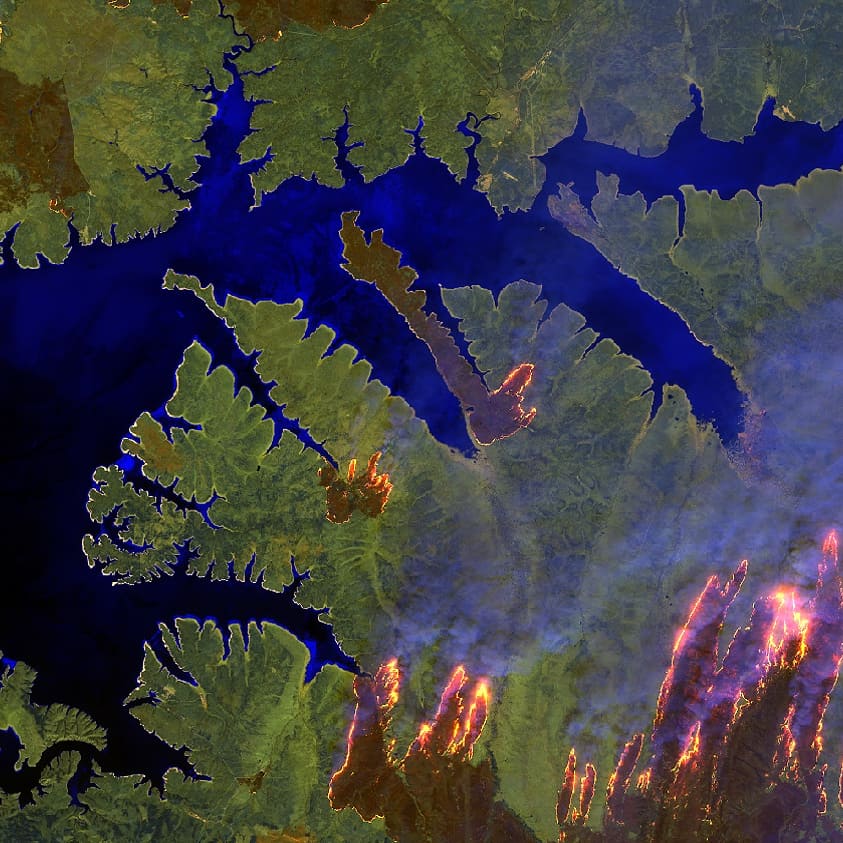Multiple wildfires across Russia have caused officials to issue multiple states of emergency and evacuate thousands, while government officials are accused of largely ignoring the problem.
The latest state of emergency was issued by Novorossiysk Mayor Andrei Kravchenko on July 14, according to the Kyiv Independent. The city in southern Russia was forced to evacuate around 500 people from the fire that burned at least 153 acres as of July 15. More than 300 people, including workers from the Emergency Situations Ministry, were fighting the fire.
Two other regions declared wildfire-driven states of emergency at the beginning of July, a Reuters article reported. The Republic of Sakha, also known as Yakutia, declared a federal state of emergency for wildfires on July 1. The Russian Ministry of Emergency Situations reported more than 107 registered wildfires burned more than 331,000 hectares (~818,000 acres) in the region.
The governor of the remote Siberian region of Tuva made the declaration on the same day as Sakha after a wildfire burned around 1,700 hectares (4,200 acres) driven by intense heat, strong winds, and dry thunderstorms.
“At the moment, 23 forest fires have been registered on the territory of the republic,” said Vladislav Khovalyg, head of the Tuva region. “Most of them are in inaccessible mountainous areas. July as a whole promises to be the most difficult month in terms of the fire situation, and we have to fight for every hectare of forest.”
Experts warned that the nation was unprepared for an alarming wildfire season. The Moscow Times reported that limited state capacity for fire prevention and control, along with ongoing dry grass burning practices, worried experts of the potential for the season to turn into an annual crisis.
The “official indifference” was seen in real-time during the Siberia wildfires, which have burned an area the size of Normandy since the beginning of the year, French newspaper Le Monde reported. While the Russian government is preoccupied with its incursion into Ukraine, officials are neglecting necessary resources to fight wildfires burning throughout the nation.
“The problem is not just in the forest and its poor management,” an Irkutsk resident told Le Monde. “It’s largely in the heads of the people and the authorities, who don’t want to see it or fight it.”
The Russian Ministry of Emergency Situations reported more than 107 registered wildfires burned more than 331,000 hectares (~818,000 acres) in the region.
Russia’s wildfire problem is exacerbated by Earth’s changing climate. Recent research has shown wildfires will worsen in the coming years, even in areas where wildfires are currently rare, such as Russia’s alpine regions. Smoke from the worsening wildfires, e.g. in Siberia, is projected to cause thousands of deaths and billions in costs for East Asia.
RELATED: Climate change will make wildfires worse, even in areas that don’t have wildfires today
The colors on the Russian Hydrometeorological Center’s map below represent the number of days of predicted “high” and “extreme” fire danger in April, according to the Moscow Times. The purple indicates less than one day, the yellow between one and three days, pink between four and six days, red between seven and nine days, and dark red over ten days.







